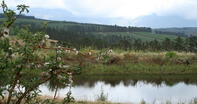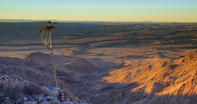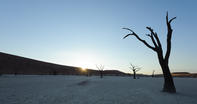Enigma to Climate Scientists
Something curious is happening in the Western Cape, and it’s a bit of an enigma to the climate scientists who discovered it. The province is warming twice as fast as the rest of the country – and they can’t explain why.

The first to notice that something was afoot were the commercial apple farmers in the Cape – their farms were getting warmer and their fruit was suffering. There seemed to be an increase in sunburn to their fruit during summer. Meanwhile, during the autumn and winter months, trees weren’t going fully dormant, because the seasons weren’t getting cold enough.
The result was early and uneven bud break and flowering. Orchards, as a result, weren’t ripening their fruit in unison, making pest and diseases control difficult. The bottom line was very bottom line: their farms were struggling to produce export quality fruit.
First Clue to Change

Temperature readings from different weather stations around the province confirmed their suspicions. Over a period of 30-odd years, there appeared to be a definite increase in maximum and minimum temperatures. It varied between places, but averaged at about a 1°C rise.
Dr Stephanie Midgley, a horticulturist at Stellenbosch University, said that in places the increase was even higher. This is the first in a series of clues from the natural environment which hint that long-term weather trends in southern Africa may have been bumped off course by rising greenhouse gases in recent decades.
Average Temperature Increase Shown

In 2006, someone at Pretoria University got together all the weather data from 26 met stations around South Africa and sat down to a bit of number crunching. The result: between 1960 and 2003, there seemed to be an increase in average temperature of about 0.5°C during that time (averaging at 0.13°C per decade), an increase that was similarly reflected in an increase in the maximum and minimum temperatures, too. So the Western Cape’s 1°C average increase was double that of the rest of the country.
The strongest evidence that change is already afoot, however, comes from much farther north, from deep in the Namib Desert where the quiver trees (Aloe dichotoma) were dying. It’s become a well documented case now: many Namibian farmers, some of whom had grown up playing in the kokerboomwoude around their family farms, began to notice that the trees were dying out complete or appeared to be retreated up mountainsides.
Because the dead trees didn’t rot in the dry climate, they became their own tombstones, monuments to where they once stood. A team of scientists from the South African National Biodiversity Institute (SANBI) set about finding what might have been causing this mass die-off.
They surveyed the full range of the quiver tree, from the north in the Brandberg Mountains in the Nama Desert, down to the very south of its natural range in Nieuwoudtville in the Northern Cape. Near Nieuwoudtville, they found healthy, abundant forests of the tree aloe. But the further north they moved, the greater damage they found.
Tree Graveyards

In many places they found no evidence of seedlings, suggesting conditions had been too harsh, year on year, for seeds to germinate and young trees to survive. In other places, they found no trees under adult size. By the time they got to the Richtersveld, they counted a 60 to 70 percent mortality rate and once they reached the valleys near the Brandberg Mountains, a few hundred kilometres north of Windhoek, they found entire graveyards of trees, with hardly a live one in sight.
Counting the dead remnants, scattered about the desert, and comparing sites with photographs taken at the same places decades ago, it was easy to see where the trees were dying, and count the rate at which it was happening. A clear trend emerged: the further north they travelled, the greater the die-off of quiver trees, with few remnant huddles surviving on the higher mountain slopes while in the very south, near the Nieuwoudtville, the trees were thriving.
Yet even far north, more trees survived on higher mountain slopes than in valleys. What makes this case so significant is that it confirms one of the main theories which scientists had long held about the responses of the natural environment to shifting long-term weather trends.
In theory, they argued, the climate envelopes in which different species live would be shifted towards the poles (north in the northern hemisphere, south in the southern hemisphere) or else up in altitude as climbing greenhouse gases forced a rise in global temperatures.
By Leonie Joubert